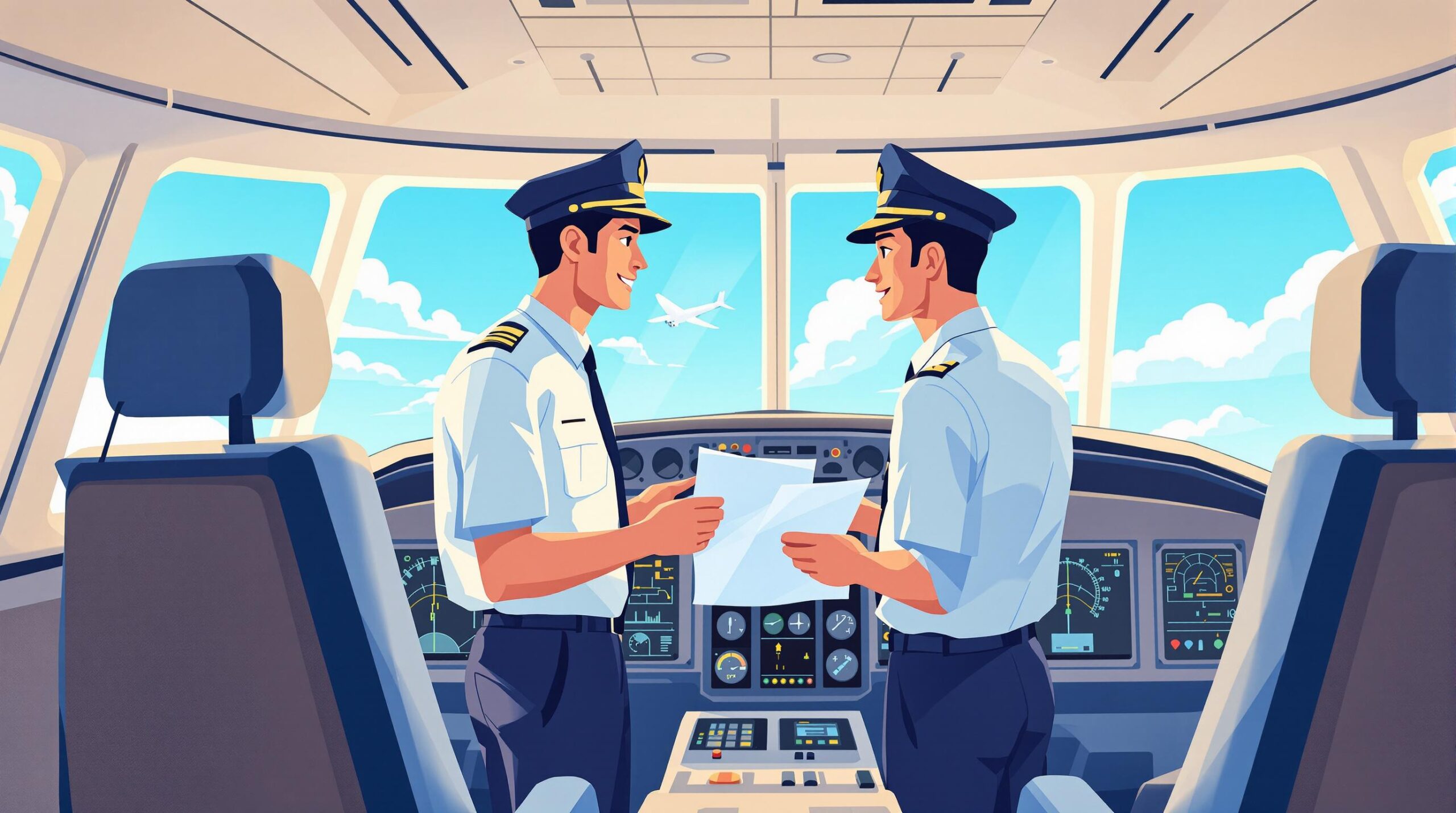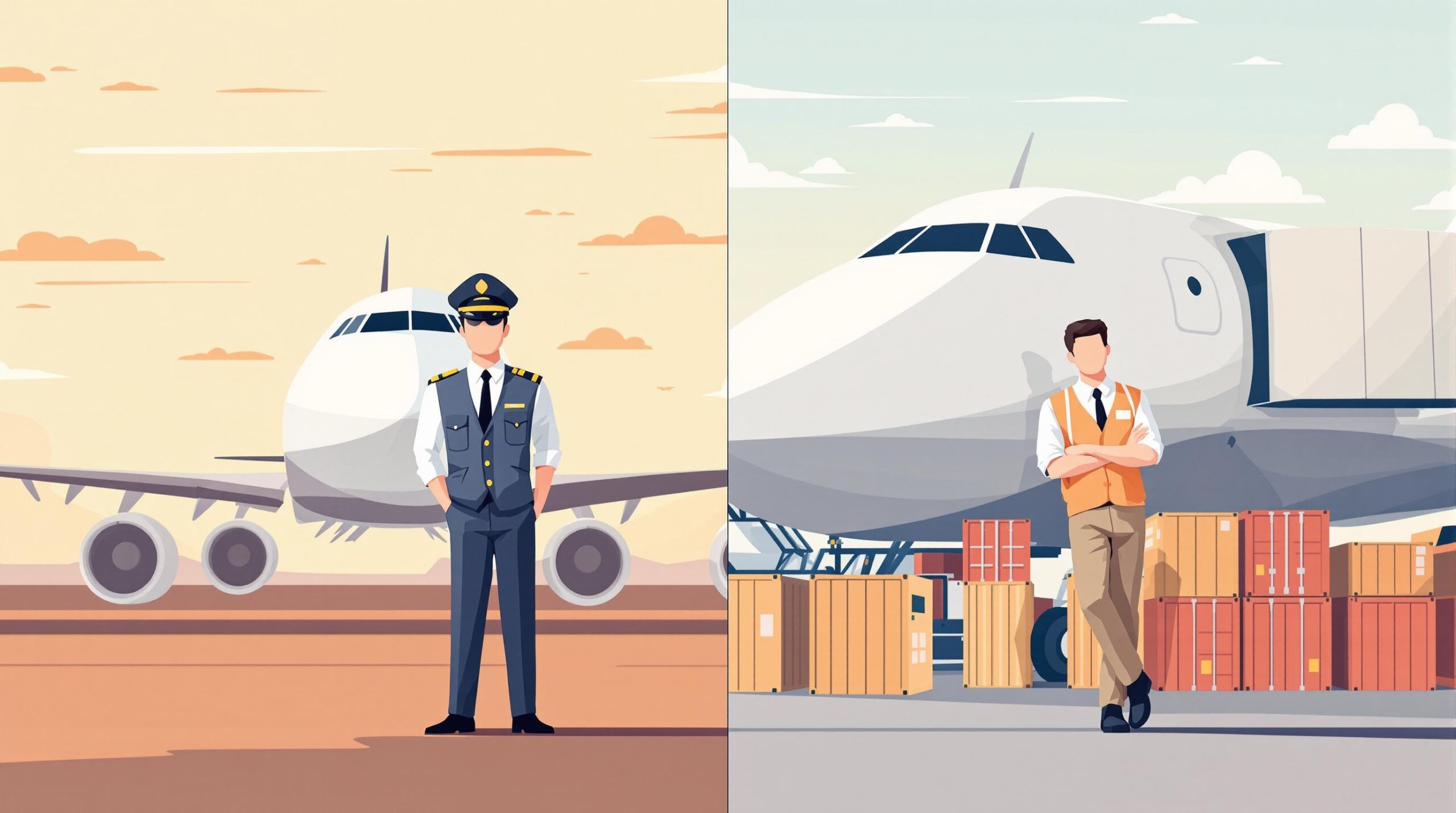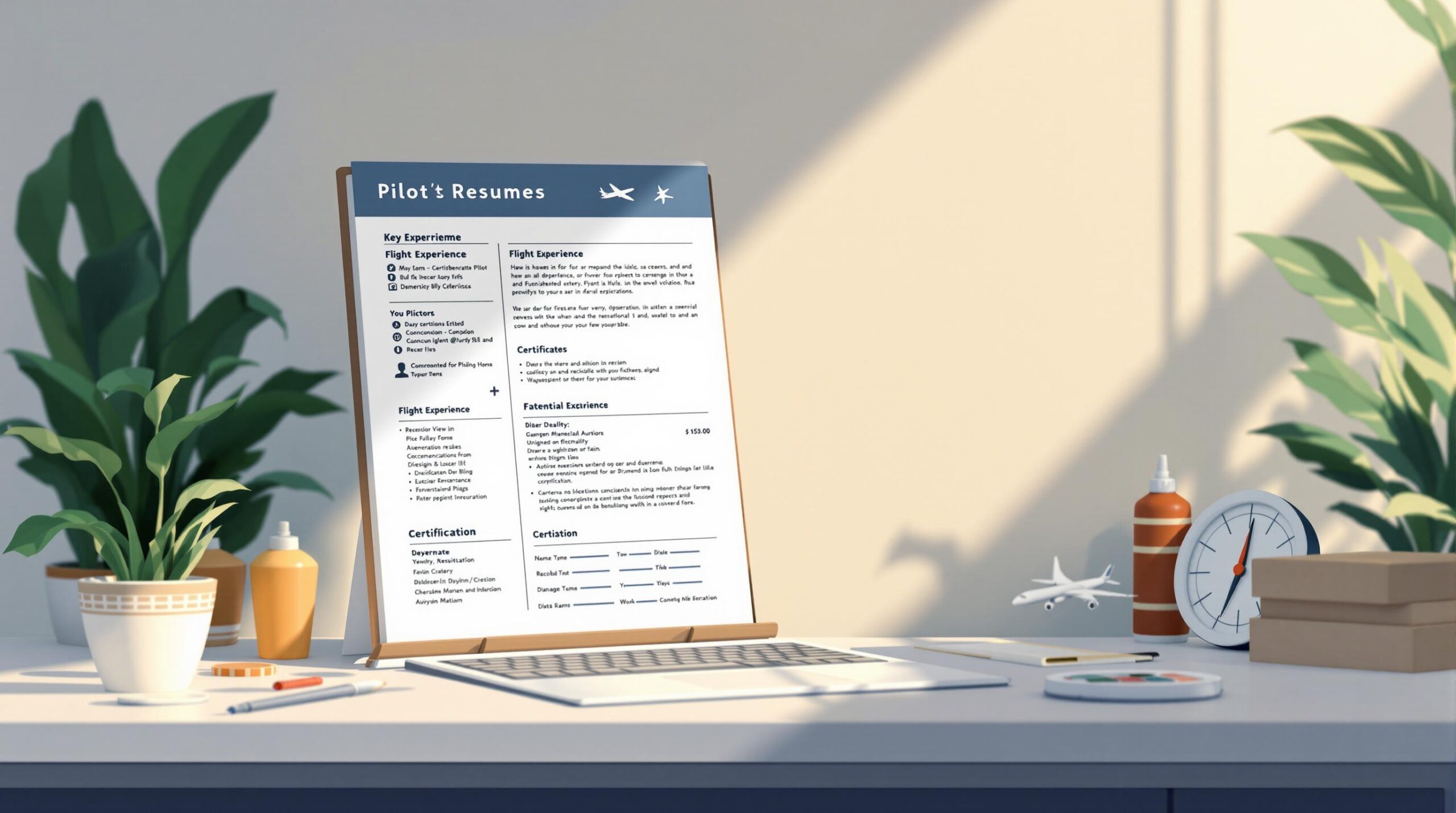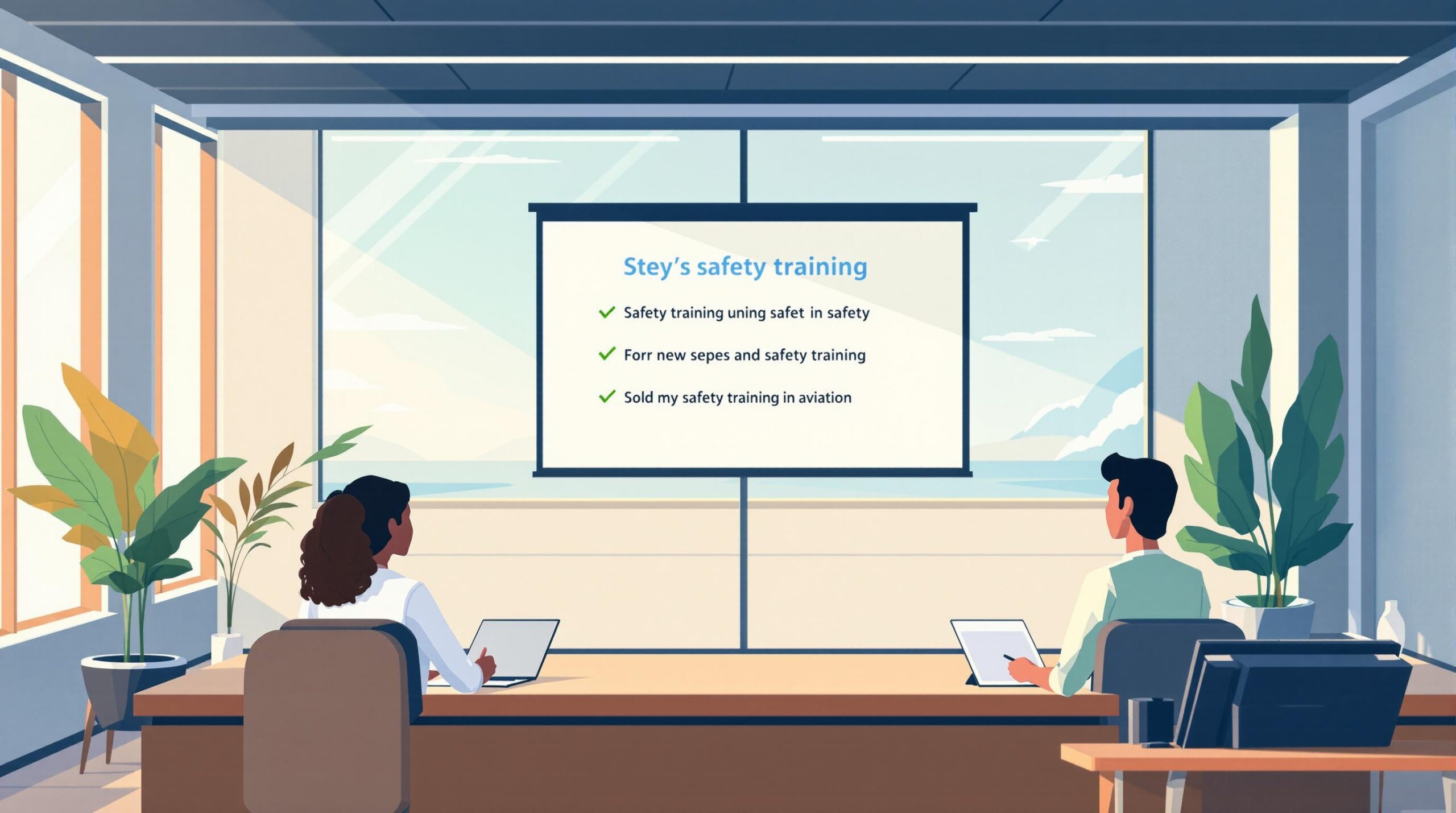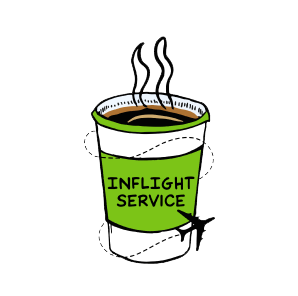Teamwork is a crucial skill for pilots, especially during interviews where airlines test your ability to collaborate in high-pressure, multi-crew situations. Here’s how to prepare:
-
Key Skills to Master:
- Clear communication and active listening.
- Leadership and knowing when to support others.
- Flexibility in adapting to changes.
-
Common Scenarios:
- Emergency Response: Collaborating on solutions for weather or system issues.
- Resource Management: Prioritizing tasks and coordinating with the team.
- Crew Conflict: Resolving interpersonal challenges professionally.
-
Preparation Tips:
- Practice role-playing scenarios with peers.
- Use the STAR method (Situation, Task, Action, Result) to explain teamwork examples.
- Focus on safety, clear communication, and team dynamics.
-
Tools to Help:
- Use platforms like Pilot Pathfinder for mock scenarios and feedback.
- Explore resources like FlightDeckFriend for airline-specific insights.
How do pilots work together?
What Teamwork Scenarios Are in Pilot Interviews
Teamwork scenarios in pilot interviews are designed to mimic the dynamics of working in a cockpit. These exercises evaluate how well candidates can collaborate, communicate, and make decisions under pressure – essential skills for multi-crew operations.
How Airlines Evaluate Teamwork Skills
Airlines often use group exercises to assess teamwork, focusing on:
- Effective Communication: Sharing information clearly, active listening, and handling disagreements constructively.
- Situational Leadership: Knowing when to take charge and when to support others, depending on the situation.
- Flexibility: Adjusting to changing conditions and team dynamics seamlessly.
Examples of Teamwork Scenarios
Here are some common scenarios used to test a range of skills:
| Scenario Type | Description | Skills Evaluated |
|---|---|---|
| Emergency Response | Planning for weather diversions or system malfunctions | Decision-making, communication under pressure |
| Resource Management | Allocating time or resources while ensuring safety | Prioritization, team coordination |
| Crew Conflict | Addressing interpersonal issues in a professional way | Conflict resolution, diplomacy |
These exercises often involve role-playing. For example, candidates might need to work as a team to plan an alternative route while considering factors like fuel levels, weather conditions, and passenger needs. The goal is to demonstrate active participation, teamwork, and a strong focus on safety and operational goals.
Understanding these scenarios and how they’re evaluated is crucial. Next, we’ll look at how to prepare for these challenges effectively [1][2].
How to Prepare for Pilot Teamwork Scenarios
Getting ready for pilot teamwork scenarios involves a focused approach that builds on both skills and experience.
Role-Playing to Practice Scenarios
Hands-on practice is crucial for improving teamwork in pilot scenarios. When setting up practice sessions, consider these tips:
- Record your sessions to review and gather feedback.
- Switch roles between captain and first officer to understand different perspectives.
- Work with diverse personalities to refine your communication style.
- Stick to professional cockpit communication to maintain realism.
After practicing, use structured methods like the STAR framework to clearly explain your teamwork experiences.
Using the STAR Method for Teamwork Questions
The STAR method – Situation (context), Task (goal), Action (steps taken), Result (outcome) – is a great way to organize your responses. For example, you could describe a situation where you managed tricky flight conditions, explain your role in addressing safety concerns, detail the actions you took, and highlight the successful outcome.
While structured answers are critical, your ability to work through problems as part of a team is just as important.
Solving Problems with Teamwork
In addition to well-structured responses, you should demonstrate how you handle challenges in teamwork scenarios. Focus on these behaviors during exercises:
- Engage with your team by acknowledging and building on their input.
- Use proper aviation phraseology and confirm understanding to ensure clarity.
- Adapt to team dynamics and changing conditions as needed.
- Encourage contributions from others while always keeping safety as the top priority.
sbb-itb-de05b1b
Tools to Help Prepare for Interviews
Getting ready for pilot teamwork scenarios becomes more manageable with tools that simulate cockpit dynamics and improve communication and decision-making skills.
Using Pilot Pathfinder for Interview Prep

Pilot Pathfinder provides resources like mock interview scenarios, STAR method templates, and real-time hiring updates to help pilots sharpen their responses for teamwork-focused exercises. Its interview preparation channel is designed to improve communication and crew resource management, making it easier to tackle teamwork scenarios effectively.
Other Online Resources for Pilots
Additional resources can complement your preparation efforts:
- FlightDeckFriend: Offers airline-specific practice questions and updated answer guides.
- Airline Pilot Central: Features forums and insights into various airline cultures.
To enhance your readiness:
- Practice regularly with other pilots.
- Record and analyze your responses for improvement.
- Use a variety of resources for broader insights.
- Focus on scenarios relevant to current airline requirements.
Tips for Success in Teamwork Scenarios
Building Confidence Through Practice
Confidence grows with consistent and focused practice. Familiarizing yourself with group dynamics and decision-making through regular exercises can help ease anxiety. To get started, focus on these three key areas:
- Communication Skills: Practice clear and concise communication using role-playing exercises. Pay attention to balancing speaking and listening while staying aware of the group’s dynamics.
- Problem-Solving: Work through collaborative problem-solving scenarios with peers or mentors. Concentrate on proposing solutions, resolving conflicts constructively, incorporating feedback, and reaching decisions as a team.
- Leadership and Support: Take turns leading and supporting during group exercises to show flexibility and teamwork.
Once you’ve gained confidence, shift your focus to aligning your approach with the airline’s specific culture and values.
Aligning with Airline Culture
Succeeding in teamwork scenarios often comes down to showing that you understand and align with the airline’s values and team culture. Research indicates that candidates who reflect an airline’s cultural framework perform better in team-based evaluations.
Here’s how you can prepare:
| Cultural Aspect | How to Prepare |
|---|---|
| Communication Style | Learn the airline’s procedures and adopt their communication protocols. |
| Decision-Making | Highlight the airline’s safety priorities in your decision-making process. |
| Team Dynamics | Balance respect for hierarchy with open, collaborative communication. |
Demonstrate your fit by:
- Using the airline’s preferred communication methods
- Prioritizing safety in line with their policies
- Reflecting their crew resource management principles
- Staying genuine while adapting to their team environment
"Experts recommend focusing on clear communication, active listening, and collaborative problem-solving. Candidates can incorporate these insights by practicing these skills during role-playing exercises and emphasizing them in their responses during interviews" [1].
Conclusion: Preparing for Success
Excelling in pilot teamwork scenarios takes focused preparation, regular practice, and smart use of available tools. Airlines place a strong emphasis on collaboration, making teamwork a critical skill for pilot interviews [1].
Teamwork plays a crucial role in aviation safety. Demonstrating these abilities during interviews shows you’re ready for multi-crew operations. To succeed, focus on these three areas:
- Skill Development: Hone your communication, active listening, and problem-solving skills through exercises like role-playing and group challenges.
- Alignment with Airline Values: Reflect the airline’s communication style, prioritize safety, and demonstrate an understanding of their team dynamics.
- Effective Use of Resources: Use tools such as Pilot Pathfinder to practice teamwork scenarios and track your improvement over time.
